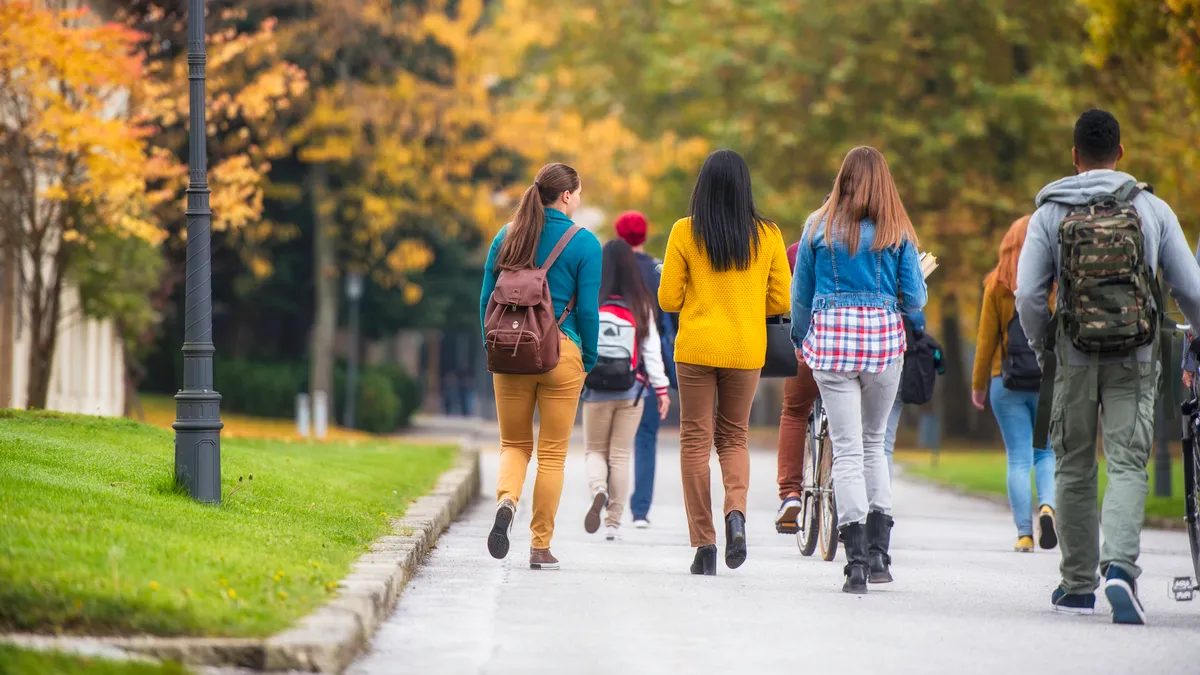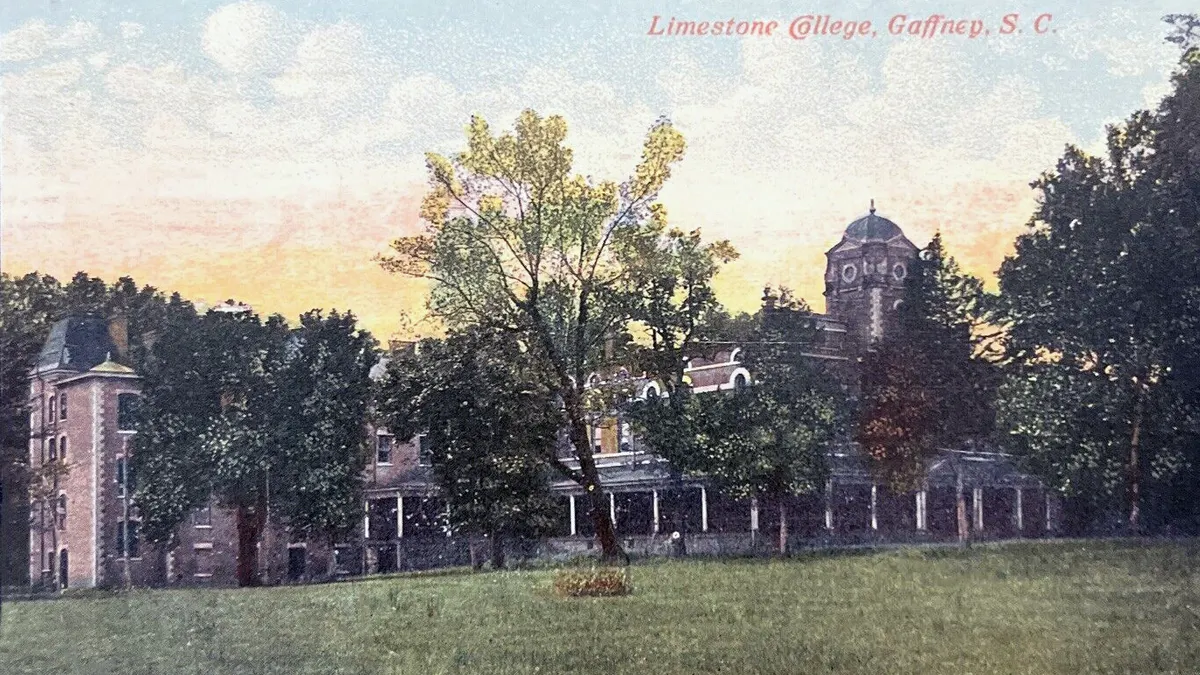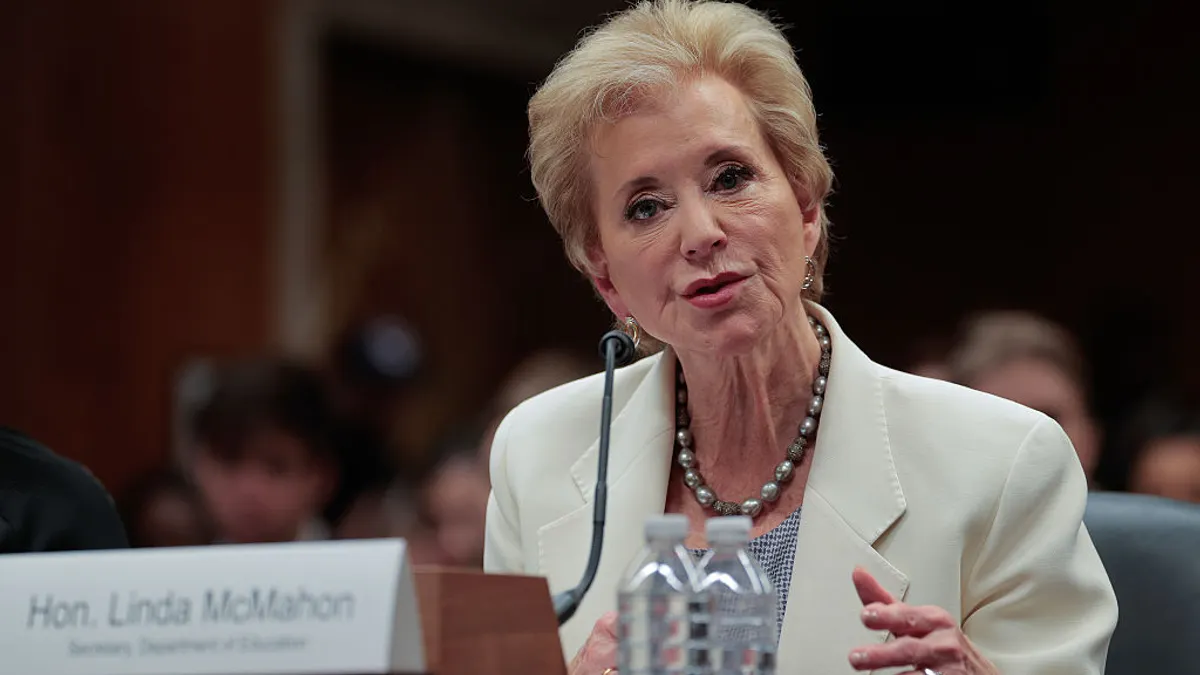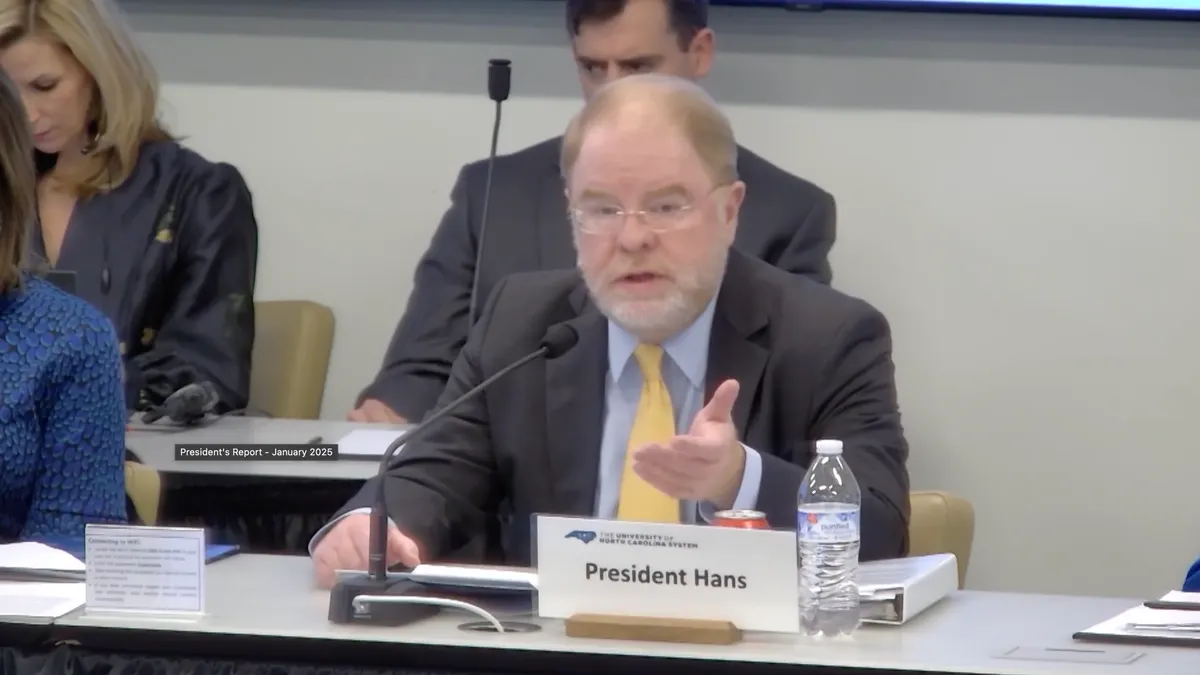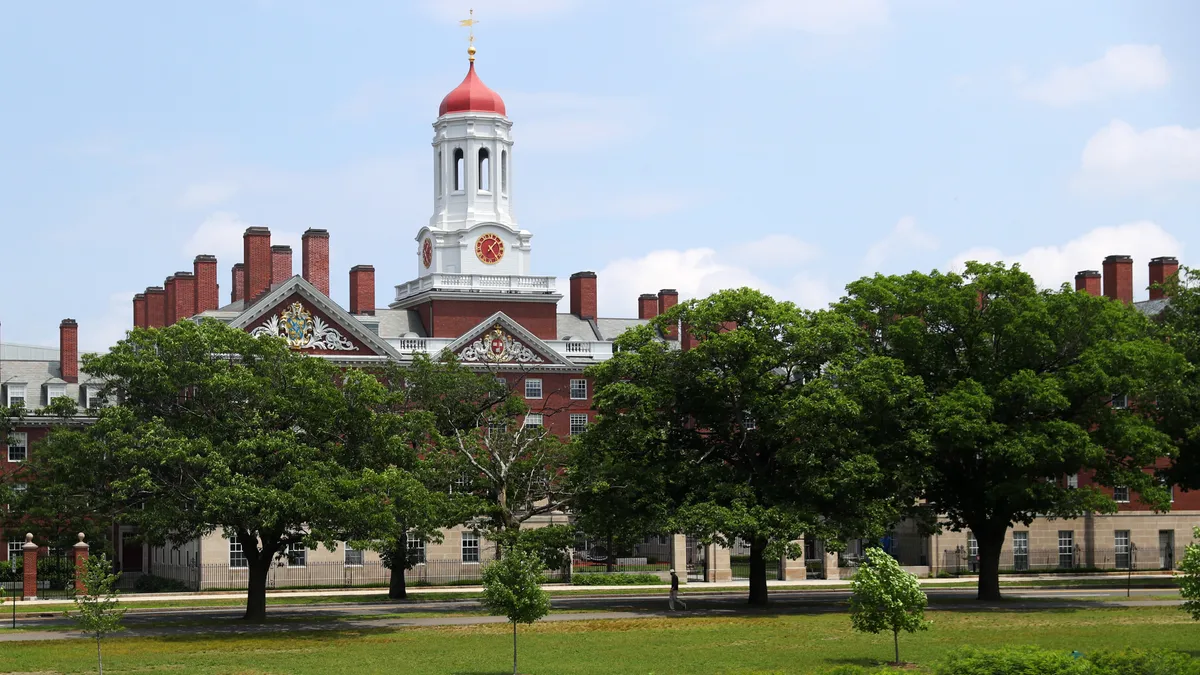It's no secret that affirmative action in higher education is under threat. Since it was instituted in 1961, the policy has been challenged several times in the Supreme Court. Its constitutionality was upheld at each turn, though only narrowly.
But the pressure is building.
Two lawsuits brought by the same anti-affirmative action group are working through the lower federal courts. The Trump administration has rolled back Obama-era guidance encouraging race-conscious admissions and is actively investigating colleges and universities that use the policy. And the newest appointee to the Supreme Court gives the bench a conservative majority.
Today, only the most selective colleges consider race in admissions. A 2015 report from the American Council on Education (ACE) polling 338 nonprofit four-year institutions found that six in 10 admitting fewer than 40% of their applicants consider race as a factor in admissions. Meanwhile, eight states have placed bans on affirmative action that include state college and universities.
Supporters of affirmative action say the approach is ultimately more straightforward and effective at achieving racial diversity on campus than alternatives, which have been tested for as long as two decades in states like California, the first to ban it. And, they say, it costs a lot less.
But the option may soon be off the table entirely if one of a handful of high-profile cases reaches the Supreme Court. Legal scholars say that's likely, and they advise colleges that consider race and want to continue to do so to increase the level of documentation around their affirmative action policies, focusing on how the diversity they yield creates educational value. But they should also be ready to embrace alternatives.
"They have to be ready for whatever happens when one of these current cases gets up to the Supreme Court, if it gets there," said Gary Orfield, co-director of the Civil Rights Project at the University of California, Los Angeles, which advocates for race-conscious admissions. "When that happens, it will determine the legality of affirmative action for the country."
Affirmative action for colleges today
This wouldn't be the first time affirmative action's constitutionality was challenged. A series of landmark Supreme Court decisions has shaped its definition since 1978. Taken together, the court currently holds that racial and ethnic diversity has educational value and is therefore worth pursuing, but that it must be considered as one of several factors and as a last resort.
The most significant test yet occurred in 2016. In Fisher v. University of Texas II, the Supreme Court heard a case it had handed back to a lower court in 2013. In it, a white woman named Abigail Fisher challenged her rejection from the University of Texas at Austin (UT Austin), which used race-conscious policies for students like her — who didn't qualify for its Top 10 Percent Plan (TTPP) — to fill the remaining quarter of seats in its freshman class. She claimed those policies, which considered grades and personal achievement as well as other factors such as race, violated her equal protection rights under the 14th Amendment.
In his opinion announcement on behalf of the majority, which ruled in favor of the university, Justice Anthony Kennedy said UT Austin had indeed met the burden for "strict scrutiny" established in earlier cases. That meant the university was able to prove racial diversity was necessary to the educational experience and that available race-neutral alternatives weren't sufficient for achieving it.
A 'serious' political challenge
The decision was considered a win by affirmative action advocates because it kept the policy on the books. But the narrow margin of victory also was cause for concern among supporters, in part because it came from Kennedy's unexpected swing vote. More importantly, in their deliberations the justices made considerations that could forecast the outcome of the next likely challenge to affirmative action.
In his dissent, Justice Samuel Alito indicated that affirmative action policies could discriminate against Asian-American students, who tend to have high GPAs and test scores and who might be admitted at higher rates if those were the only factors considered. That interpretation could be viewed as an invitation for future challenges, such as the current one involving Harvard University, which begins opening arguments today, and Justice Department investigations underway at Yale University and Harvard. All center on claims that affirmative action admissions policies unfairly discriminate against Asian-American applicants, specifically, saying they were subjected to illegal quotas and discriminatory personality ratings, although they had higher test scores.
"It sort of alludes to the fact that maybe the justices have formed an opinion already when it comes to Asian-Americans," said Liliana Garces, an associate professor in the College of Education at UT Austin and co-author of an amicus brief filed with the U.S. District Court in Boston in support of Harvard. The brief was filed by 531 social scientists and scholars arguing that race-conscious admissions benefit Asian-American students and that the plaintiffs put undue emphasis on test scores in admissions to a highly selective university. (Top university presidents also filed a brief supporting Harvard.)
"It sort of alludes to the fact that maybe the justices have formed an opinion already when it comes to Asian-Americans."

Liliana Garces
Associate professor, UT Austin
Basing the constitutionality of affirmative action on how it impacts Asian-American students "would be very, very divisive," Orfield told Education Dive, though the legal effect wouldn't be any different. "The idea is to use one people of color to break up the opportunities of other peoples of color and to divide what has been a coalition in favor of affirmative action." Data show that Asian-Americans generally support affirmative action, though seeing the group as homogenous obscures important stratification by nationality, ethnicity and immigrant status.
The Trump administration isn't the first to try to limit or eliminate affirmative action. The Bush administration, for example, also threatened universities that considered race with litigation. The administration filed a brief in opposition to the University of Michigan Law School during a 2003 Supreme Court case challenging its consideration of race in admissions, saying the policy amounted to quotas. The court narrowly upheld the university's use of affirmative action based on the individualized review process each application underwent.
Yet current conditions, and the court's new ideological balance in particular, make the current challenge to affirmative action "the most serious we have had for a long time," Orfield said.
Are alternatives as effective?
Several alternatives to affirmative action are in place at colleges in states that ban race-conscious admissions or at institutions that have opted out. One of the most-cited is Texas' Top Ten Percent Plan (TTPP), through which students in the top 10% of their high school graduating class can gain admission to any public college in Texas. The policy was created in 1997 in response to a challenge of the state's affirmative action policies, aiming to keep the student body at public colleges diverse without considering race directly.
It has informed race-neutral admissions policies in California and Florida, too.
Studies of race-neutral alternatives show varying results. Examining those used by the University of California System following the state's 1996 affirmative action ban, researchers from the University of California, Riverside, and UCLA's Civil Rights Project wrote in a 2015 report that the system "has never recovered the same level of diversity that it had" before the ban, which they note was already "inadequate." They said the drop-off came despite "high levels of both human and financial resources in many areas."
California's well-regarded and selective public university system makes a good case study for highly selective colleges considering the implications of race-blind admissions, Orfield said.
The researchers found California's ban had the biggest impact at the system's most selective universities, UCLA and Berkeley. At Berkeley, the share of freshmen from underrepresented minority groups fell from 23% in 1995 to 11% in 1998, and at UCLA the share fell from 28% to 14% during the period. In 2012, they made up 22% of UCLA’s freshman class; however, the rebound was due largely to growth in the state’s Latino population as well as to holistic admissions policies that can consider academic accomplishments "in light of the applicant's life experiences and special circumstances."
"They have to be ready for whatever happens when one of these current cases gets up to the Supreme Court, if it gets there. When that happens, it will determine the legality of affirmative action for the country."

Gary Orfield
Co-director, Civil Rights Project at UCLA
Research has found another widely discussed approach — looking at income — insufficient to achieving racial diversity. Adding factors such as neighborhood and wealth can help, said Richard Kahlenberg, a senior fellow at The Century Foundation who in his personal capacity as a scholar is serving as an expert witness in the Harvard case. Kahlenberg supports socioeconomic alternatives to race-conscious admissions.Meanwhile, one look at the TTPP's impact in a single major urban Texas school district found that qualifying students tended to be white women and were less likely to be low-income or minority students. Data does show that it provides a pathway for underrepresented students, however. The TTPP was the biggest driver of admissions for black (77% of admitted students), Latino (87%) and Asian-American (75%) students into the state's flagship institution, UT at Austin, in 2016. Sixty-nine percent of white students in 2016 were admitted to the university via the plan.
"Even when looking at black and white families of the same income level, African-Americans tend to live in neighborhoods with higher levels of poverty and tend to have low wealth or net worth, so looking at income alone is unfair to students of color," he wrote in an email to Education Dive.
In its review of colleges' admissions policies in light of a crackdown on affirmative action, ACE found that combining race-conscious and race-neutral strategies yielded the best results. "[These] approaches can and do coexist and are often used outside of admissions decisions," the researchers explain. They cite popular and effective pairings such as targeted recruitment and yield initiatives to encourage more racial and ethnic minority, low-income and first-generation students to apply; summer or bridge programs for admitted students; and targeted scholarships.
A majority of the 338 nonprofit, four-year institutions surveyed used targeted recruitment and outreach to encourage applications from racial and ethnic minority students (78% of institutions) as well as low-income or first-generation students (71%). A similar share (76%) increased recruitment and offered additional consideration for community college students.
Fewer institutions used more contentious strategies such as percentage plans (13%), test-optional admissions (16%) and reducing emphasis on legacy admissions (24%).
UT at Austin's Garces contends that while such efforts may increase the number of applications from the targeted groups, "it's just not as effective as when you can consider the whole experience the individual is bringing, including how their racial background may affect their experience in life."
What should colleges do next?
The extent to which colleges have reevaluated their race-conscious admissions policies is uncertain. According to Kahlenberg, colleges have been reluctant to revise their policies largely due to the cost of alternatives.
"Universities have powerful incentives to evade the law and employ racial preferences — even when alternatives would work — because it is cheaper to do so," he said via email. "Giving a preference to full-pay students of color requires less expenditure on financial aid than giving a break in admissions to economically disadvantaged students of all races."
The heart of the issue, Orfield said, is higher education's autonomy. "We are really talking about a question of whether universities should have the power to create their own student bodies, to create classes that produce maximum education effectiveness in their judgement," he said. So far, the Supreme Court has upheld affirmative action on this basis.
With that in question, however, colleges should document how and why they're factoring race into admissions and be ready and willing to explain, he said, with research showing the implications of such policies (or lack thereof) for their college community.
Stella Flores, an associate professor of higher education at New York University, agreed. "Institutions can't run wild without accountability," said Flores, who also is the associate dean for faculty development and diversity at NYU's Steinhardt School of Culture, Education, and Human Development. "They need to show that they have tried other methods." If other methods worked, but not as well as affirmative action, they should tell that story, too, she added.
The decision to consider race in admissions extends beyond the legal realm, Garces noted. Public opinion polls have largely found that Americans don't favor affirmative action, although they say diversity is important.
"Other than that," said Orfield, "you're going to have to wait for the Supreme Court hands down, if one of these cases gets up there, which is probably a matter of a couple of years at least."
Key affirmative action cases for higher ed:
Regents of the University of California vs. Bakke, 1978: 8-1, in favor of Allan Bakke, a white man contesting his rejection from the university, but supporting affirmative action policies generally.
Grutter vs. Bollinger, 2003: 5-4, in favor of the University of Michigan.
Fisher vs. University of Texas, 2013: 7-1, remanded to a lower court.
Fisher vs. University of Texas, 2016: 4-3, in favor of UT Austin.



